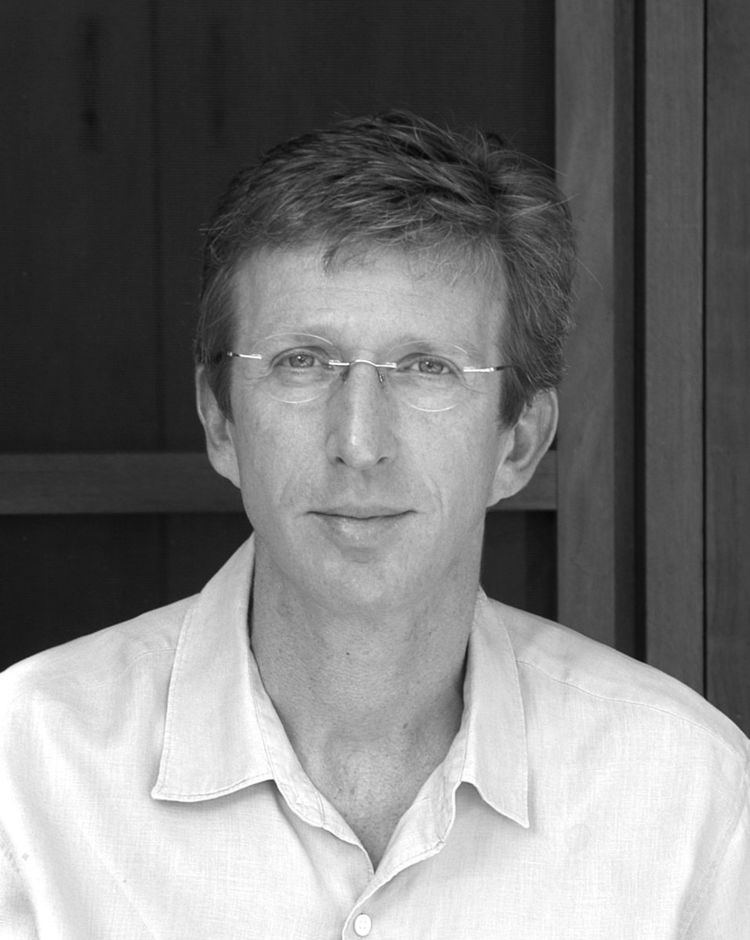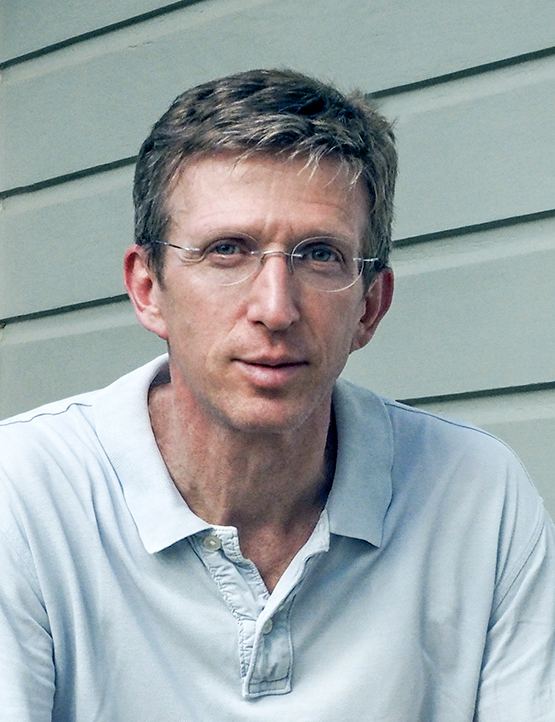Nationality American Known for Architecture | Movement Green Name David Heymann | |
 | ||
Education The Cooper Union, Harvard Graduate School of Design Notable work Prairie Chapel Ranch near Crawford, Texas, Audubon Society visitor center Awards 2002 award for Award for Outstanding Educational Contributions from the Texas Society of Architects, Friar Centennial Teaching Fellowship, and many others | ||
David heymann 9 30 2016
David Heymann is an American architect who was commissioned by President George W. Bush to design an environmentally friendly house for the Prairie Chapel Ranch near Crawford, Texas.
Contents
- David heymann 9 30 2016
- Approach to architecture
- General honors
- Commissions and design awards
- The Western White House
- Personal life
- References

He received his Bachelor of Architecture degree from The Cooper Union in 1984. After receiving his B.Arch., he worked for Tod Williams and Associates, and I.M. Pei and Partners. He received his Master of Architecture Degree from the Graduate School of Design at Harvard University in 1988. Heymann first taught at Iowa State University, and was the Associate Dean for Undergraduate Programs at The University of Texas at Austin. He is currently a professor for several architecture courses at the University of Texas.
Approach to architecture
The Audubon Society selected Heymann to design their new interpretive visitor center at Sabal Palm Grove Sanctuary. Audubon Magazine writer Patricia Sharpe calls him a "well known green architect".
Heymann says that he tries to design buildings that fit in with their surroundings and that sustainability in design is important to him. Heymann has said:
Most of my clients are building in nonurban areas, seeking to establish grounded relationships with their sites. They are not initially worried about conservation. ... More and more, I can push my clients further — to use groundwater cooling, for example — because they are cognizant that an emotional benefit also accrues to the building ... My work is possible only because people are populating the countryside at alarming rates, seeking to find a world they think is lost. Architects have argued against this and other recent trends — the increasingly large house, for example — to no avail.
General honors
In 2000, Heymann was selected by the Architectural League of New York for inclusion in its Emerging Voices series.
He is the recipient of the 2002 award for Award for Outstanding Educational Contributions from the Texas Society of Architects, and he was selected as a visiting scholar by the American Academy in Rome for 2002 and 2003.
He is the recipient of the 17th annual Friar Centennial Teaching Fellowship (FCTF). The fellowship comes with a $12,000 cash honorarium which is the University's largest for undergraduate teaching excellence. The Fellowship is funded by earnings from the nearly $500,000 FCTF endowment. Professor Heymann is the first person from the School of Architecture to receive the award. The Friar's award is one of 8 teaching awards he has received while at the University of Texas. He has also been elected to the University’s Academy of Distinguished Teaching Professors.
Commissions and design awards
Heymann and fellow architects Michael Underhill and Laura Miller won a design citation from Progressive Architecture magazine in 1994 for their design of the Unitarian Universalist Fellowship of Ames, Iowa. Since the building was built, the trio has also received an honor award from the American Institute of Architects, the professional organization for architects in the United States. The design was also the winner of a Progressive Architecture Design Award Citation.
The Western White House
Heymann was selected by George W. Bush and Laura Bush to design a 4,000 ft² honey-colored native limestone environmentally friendly single-level home on the Prairie Chapel Ranch, which served as their home away from the White House. A 10-foot (3 m) wide limestone porch encircles the house. The property was referred to as the Western White House and as the Texas White House.
The house was designed with environmental standards in mind. Heymann selected limestone quarried very close to the site. The pieces used are left over from other cuttings, making a statement about resource conservation. "They cut the top and bottom of it off because nobody really wants it," Heymann says. "So we bought all this throwaway stone. It's fabulous. It's got great color and it is relatively inexpensive." Both the main house and the guest house use geothermal energy for their heating and cooling and require 25% less energy usage than a conventional heating and cooling system.
The passive solar house is positioned to absorb winter sunlight, warming the interior walkways and walls of the residence. A 25,000 US gallon underground cistern collects rainwater gathered from roof urns; wastewater from sinks, toilets, and showers cascades into underground purifying tanks and is also funneled into the cistern. The water from the cistern is then used to irrigate the landscaping around the four-bedroom home.
"One thing we wanted was to make sure the house fit into the landscape," Laura Bush says. "I think it does, with the low house and the native limestone that looks very natural. It also takes advantage of the landscape with all the views." The view played an important role in situating and designing the house, as did the breezes and the direction of the sun. During the design process, Heymann would outline potential layouts in the ground and the Bushes would stand there visualizing what the house would look like in each setting.
The final design takes maximum advantage of the breeze by being long and narrow – most of the house is only one room wide. The house is surrounded by a porch, which shades the house from direct sun in the summer and provides a seamless transition from indoors to outdoors. Most traffic between rooms goes via the porch, although there are some interior doors. There are no stairs or thresholds, Laura Bush points out. "We wanted our older parents to feel comfortable here," she says. "We also want to grow old here ourselves." Heymann says, "The house doesn't hold you in. Where the porch ends there is grass. There is no step-up at all." President Bush has said Heymann "did a fabulous job" with the house.
Personal life
Heymann lives in Austin, Texas with his wife, Sandra Fiedorek, and their two children, Walter and Helen.
